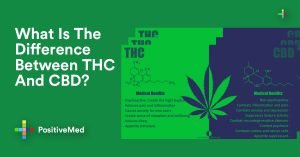At the very beginning of the pandemic, in search of tranquility, and in the atmosphere of arising panic, we used to hear from the media that the novel Coronavirus is nothing more than the seasonal flu. Some doctors on TV were convincingly telling us that since the lethality is low, there is nothing to worry about. Do they still believe it now, with more than 3 million people infected? Let’s look closer at the case.

Protests dictated by the understandable fear for the collapsing economy
Since the flu kills more people than coronavirus, do we have to shut down the economy? These were the voices of protestants denouncing state shutdowns. Some protesters even claim that Covid-19 is a lie. Naturally, their anger and the sense of unfairness is understandable. We all suffer somehow because of the sudden spread of SARS-Cov-2. But is the flu and Coronavirus comparison still valid from any point of view?
The real numbers and reasons to be worried
The sad truth is that the US death toll from COVID-19 this year has exceeded 62,000. It means that it surpassed the high-end estimate for flu deaths since October. The first reason for the COVID-19 supremacy over flu is its overwhelming speed of spread combined with the lethality level. Coronavirus kills at a much faster rate than the flu, and it’s much more contagious. Research shows that a person with the flu infects an average of about 1.28 other people, whereas an infected individual with novel coronavirus infects an average of about 2 to 3 other people. It looks as if the numbers didn’t change much, but after a few mathematical operations, it becomes clear that the differences between the number of infected people are crucially bigger when it comes to coronavirus eventually.
Summer hope
We (scientists, basically) are still not sure whether the virus would dissipate in summer. Let’s notice that it kept spreading in the Southern Hemisphere during its summer months. What does it mean for us? Unfortunately, it suggests that warm weather won’t slow its spread, even if many of us are convinced that this is the case.
What about the rate of fatal cases?
Coronavirus kills at a much faster rate. US Centers for Disease Control and Prevention claims that from October 2019 to early April 2020, the flu killed an estimated 24,000 to 62,000 people in the US. If 62,000 people died from the flu in this period, that means the country had an average of about 331 flu deaths a day. Keep this number in mind. And now let’s pass to the Coronavirus cases count. According to data from Johns Hopkins University, it killed more than 62,850 people in the US from the first known death in February through the end of April. In short, it means that an average of more than 739 people died per day from coronavirus in the US was noted. The number of fatal cases is doubled when you compare the two diseases.
The delayed appearance of symptoms
Another essential threat is that Coronavirus can be spread for many days without symptoms. In the case of flu, the incubation period is relatively short – it typically takes one to four days after infection. Why is it so important? Because, when it comes to the flu, people who get sick will know it soon, and will likely stay home, avoiding contact with others and at the same time, saving them from infection. The incubation period with coronavirus is about three to 14 days.
Sometimes it can be even 21 days or a whole month! A person with COVID-19 may be contagious 48 to 72 hours before starting to experience symptoms, emerging research suggests. This strengthens the reason for wearing face masks, physical distancing, and contact tracing. All of them can help reduce the risk that someone who is infected but not yet contagious may unknowingly infect others. It’s easy to notice that it’s very simple for asymptomatic carriers to infect others.
The lack of vaccine
As we all know, you can get a flu vaccine but not a coronavirus vaccine. Flu deaths could be drastically reduced if more people got flu shots, but that’s not the case with COVID-19. It’ll be months before a coronavirus vaccine is developed and becomes publicly available. To sum up, the new Coronavirus is much more dangerous than the flu, and we do need extra precautions.






